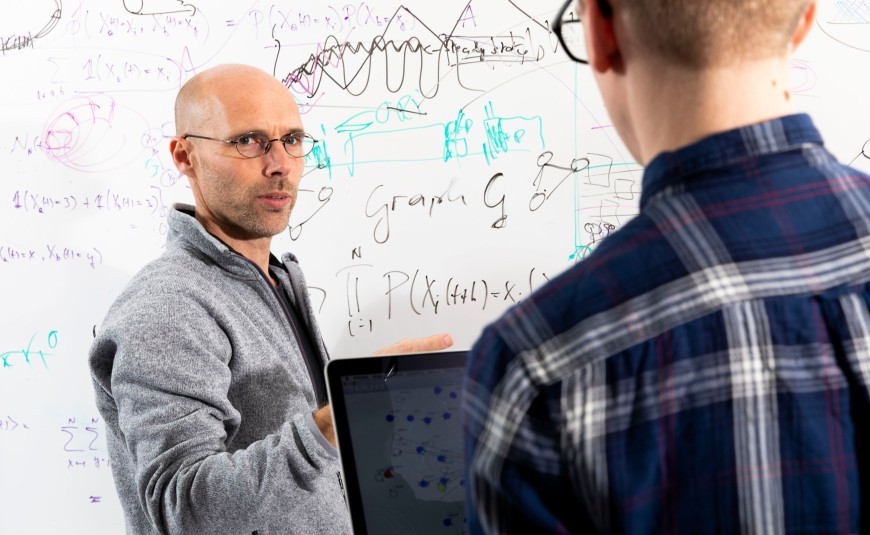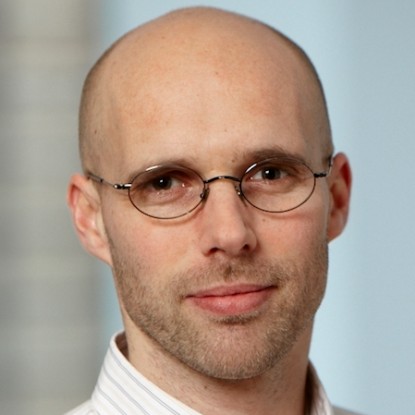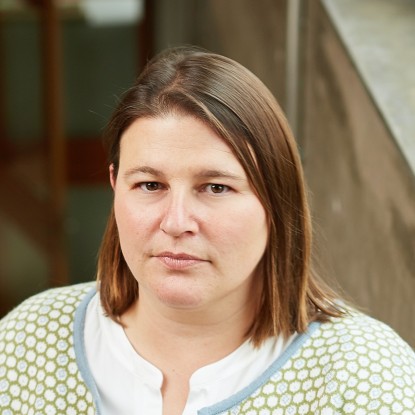Algorithms for designing genetic circuits
EU Research Council funds project by TU Professor Heinz Koeppl with 150,000 euros
2022/05/24 by Koeppl/sip
TU Professor Heinz Koeppl (Department of Electrical Engineering and Information Technology) receives a “Proof of Concept” grant of 150,000 euros from the European Research Council (ERC) for the second time. The new grant will fund his project “PLATE – Biophysical Genetic Design Automation Technology”, which deals with algorithms for the computer-aided design of genetic circuits in synthetic biology.

Unlike in physics, the biological complexity of cellular processes still pushes mathematical modelling to its limits. Nevertheless, synthetic biology is nowadays able to find quantitative descriptions in the form of computer models for simple, self-contained biomolecular systems and to derive meaningful predictions from them. For a very limited set of well-characterised genetic elements, it is also possible to reliably simulate the interconnection of these elements on the computer. Professor Heinz Koeppl's PLATE project deals with algorithms that can automatically combine elements from a sequence and regulator library in a functional combination and characterise the behaviour of the resulting networks or circuits.
Existing methods for this work with phenomenological models, whose large number of parameters often means that the predictive ability of the models is low. By adding biophysical models and basic principles, PLATE develops new design algorithms that achieve a better fit between model and experimental realisation. The foundations for such models were developed in the ERC Consolidator Grant “CONSYN”, which Koeppl received in 2017.
PLATE aims to create an entire digital design software environment in which genetic circuits can be created, analysed and optimised. As the same type of algorithms can also be found in the field of microelectronics, Koeppl will make use of synergies and is working closely with Professor Christian Hochberger, Head of the Computer Systems research group at the Department of Electrical Engineering and Information Technology.
The PLATE project is another important addition to the project portfolio of the Centre for Synthetic Biology (Profile Topic Synthetic Biology) at TU Darmstadt and strengthens the activities and international visibility of the TU in the field of synthetic biology.
Proof of Concept Grant
A Proof of Concept grant is funding that complements the European Research Council's (ERC) research grants. It is aimed exclusively at researchers who already hold an ERC grant and would like to pre-commercialise a research result from their current or already completed project. This is the first step towards technology transfer.
The aim of a proof-of-concept project should be to test the market potential of such an idea. The ERC therefore does not fund research activities with this type of grant, but measures for further development in terms of application maturity, commercialisation or marketing of the idea. In the latest funding round, 55 proposals from 16 countries were awarded an ERC Proof of Concept Grant. 96 project proposals had been submitted. The grants are part of the EU's Horizon Europe research and innovation programme.
About the person
Heinz Koeppl studied physics at the Karl-Franzens University in Graz, Austria. In a collaboration with Infineon Technologies, he received his doctorate in electrical engineering from Graz University of Technology in 2004. After postdoctoral stays at UC Berkeley and the École Polytechnique Fédérale de Lausanne (EPFL), he was appointed assistant professor at ETH Zurich in 2010. In 2013, he additionally founded and led the Systems Biology Group at IBM Research Zurich. Since January 2014, he has headed the Institute of Bioinspired Communication Systems at the Department of Electrical Engineering and Information Technology at TU Darmstadt and is a second member of the Department of Biology. In 2017, he received an ERC Consolidator Grant for his CONSYN project, in 2020 a Proof of Concept Grant for his project LONGSENSE.


